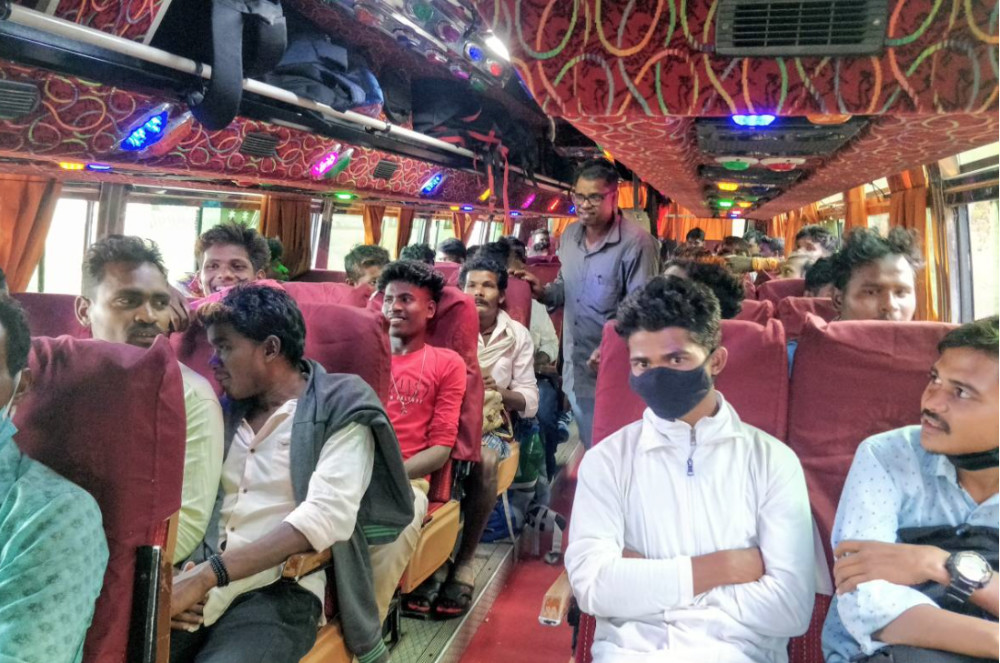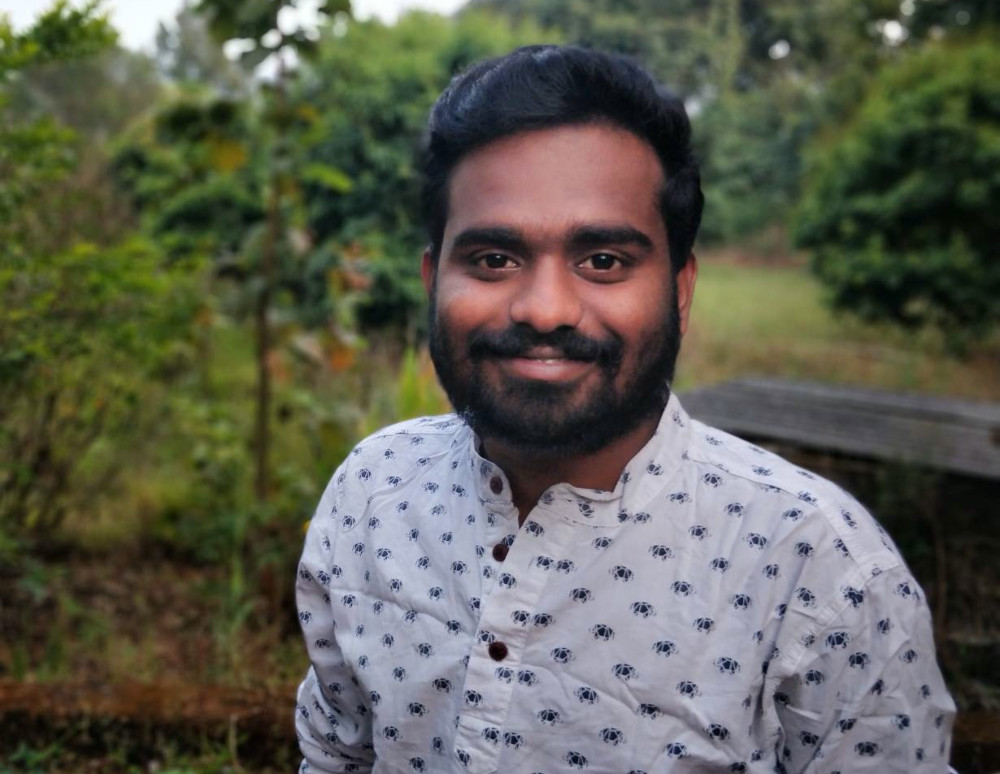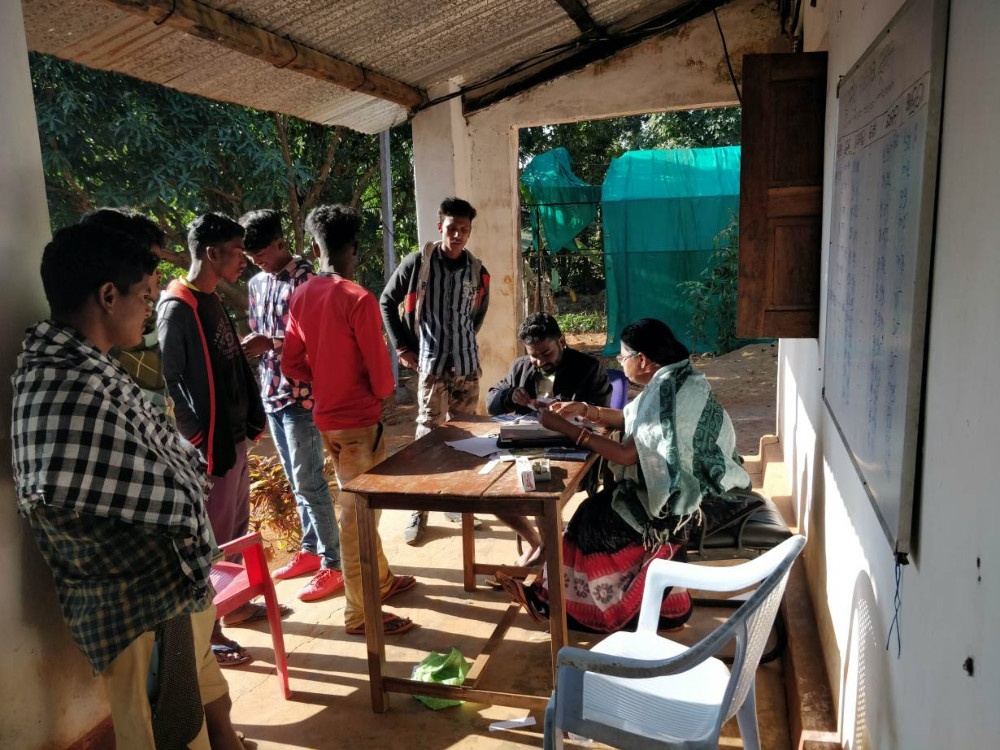
ROLI SRIVASTAVA, of Thomson Reuters Foundation, reports on how non-profit bus lines are helping workers get back to their jobs…
Mumbai, India
Thomson Reuters Foundation
Connectivity was never Kalahandi’s strength.
Villagers in the hilly eastern district, one of India’s poorest, walk two kilometres for a mobile phone signal and 120 kilometres to board a train to the job-rich southern state of Kerala.

Migrants seated in a bus in Kalahandi heading for Kerala on 15th January, 2021. PICTURE: Thomson Reuters Foundation/Manjary S.
Since COVID-19 hit, restricting travel and overwhelming India’s trains, people in Kalahandi have been almost entirely cut off from the outside world.
India has confirmed 10.8 million COVID-19 infections, the most anywhere outside the United States, but villagers, many of whom used to work in cities, are increasingly desperate to return to work.
“People have been trying to leave their villages since December but there was no connectivity. No buses. No trains. They are so desperate to find work.”
– Jobin Chacko, a labour activist in Kalahandi, who connects people with non-profit bus lines.
Jobin Chacko, a labour activist in Kalahandi, is helping maintain a critical livelihood link.
The 25-year-old connects people in remote villages to buses run by non-profits ferrying people back to cities and the jobs they left behind during last year’s lockdown.
The 1,800 kilometre journey takes three days and passes through arid villages before descending to coastal roads and past lush fields in Kerala.
“People have been trying to leave their villages since December but there was no connectivity. No buses. No trains. They are so desperate to find work,” said Chacko.
Millions of Indian migrant workers lost jobs during a national lockdown last year that shuttered entire industries and saw many walk thousands of miles to their villages where they struggled to earn money.
With work resuming across the country the flow of migrants is beginning to reverse.
Some construction and manufacturing firms have paid for flights to bring employees back but tens of thousands in India’s remotest districts remain out of reach.
Hotel-worker Birsingh Majhi, 20, is among those struggling to get back to Kerala, the coastal state known for good wages and employment in hospitality, construction and horticulture.
“I found work in a canteen here in the village but I was earning only half of what I earned in Kerala,” Majhi said.

Campaigner Jobin Chacko seen in a handout picture. PICTURE: Thomson Reuters Foundation/Jobin Chacko
The bus journey costs workers almost twice what they would spend on a train ticket but people are flocking to the service that offers rare direct connectivity from the village to Kerala.
“We had 49 seats on the first bus that left last month and in no time I had 70 applications,” Chacko said by phone from Kalahandi, a drought-ravaged region in the eastern Indian state of Odisha.
As word spreads, villagers are walking to migrant help centers operated by non-profits like Gram Vikas to inquire about the service.
India’s nearly 170-year-old rail network, among the world’s largest, carried over 20 million people each day in pre-COVID times and was the lifeline for people living in far flung corners of the country.
The lockdown was the first time the country’s entire train network came to a complete halt since a railway strike in 1974.
India has since resumed operating 65 per cent of its nearly 1800 express trains or long-haul trains connecting distant parts of the country, according to a railway ministry spokesperson.
But train services operating currently along the country’s key migrant corridors are over 90% booked, according to officials, and services such as those connecting Kalahandi to Kerala are yet to resume.
To coordinate the buses, Chacko rides his motorcycle to vantage points to get a phone signal.
He sends Whatsapp messages to finalise travel plans and makes home visits to tell villagers about the bus.

Campaigner Jobin Chacko takes bookings for a bus journey to Kerala at a migrant help centre in Kalahandi, India. PICTURE: Thomson Reuters Foundation/Jobin Chacko
Ensuring the buses are COVID-safe isn’t easy. Windows are kept open for ventilation and non-profits test workers showing COVID-19 symptoms on arrival.
“I felt honoured I could help 49 people leave for work,” he said.
“Their friends and families came to see them off when they boarded the bus. They finally had the option to earn and support their families. I could see everyone smile.”





